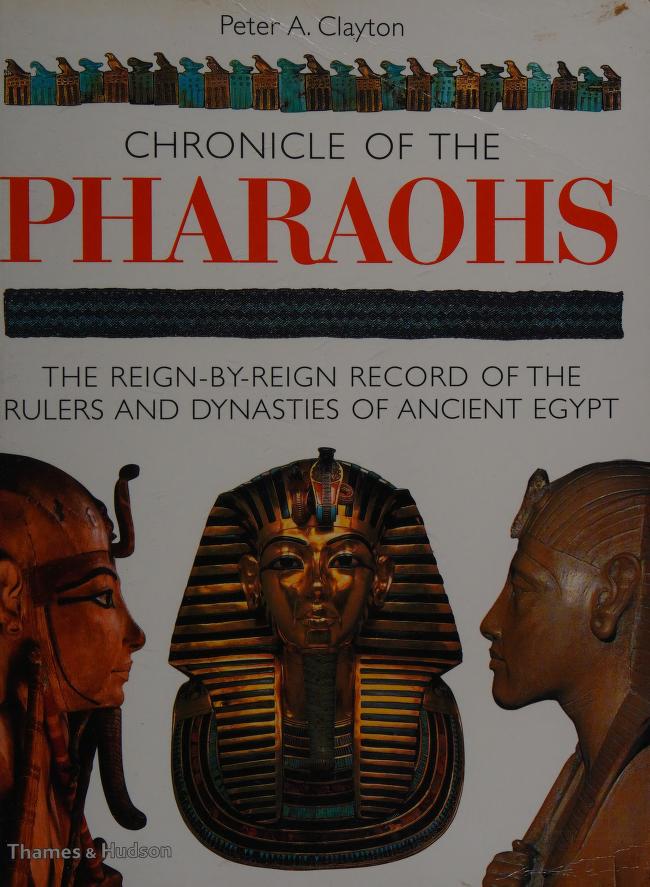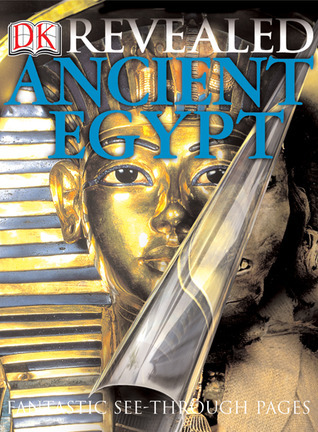Step back in time and immerse yourself in the captivating world of Chronicles of Power: The Dynasties of Ancient Egypt Revealed. Uncover the hidden secrets and unravel the mysteries of one of the most intriguing civilizations in history.
Delve into the rich tapestry of ancient Egypt’s dynasties as you explore their rise to power, their remarkable achievements, and the intricate web of stories that shaped their civilization. With a wealth of historical information and fascinating insights, this book offers a compelling journey through the captivating world of ancient Egypt.
Uncover the hidden history of Ancient Egypt with “Chronicles of Power: The Dynasties of Ancient Egypt Revealed.” This captivating book delves into the rise and fall of the powerful dynasties that shaped one of the greatest civilizations in history. Explore the reigns of pharaohs like Ramses II and understand the political and cultural dynamics of each dynasty. From the Old Kingdom to the New Kingdom, immerse yourself in the rich tapestry of ancient Egyptian history.

Contents
Exploring the Dynasties of Ancient Egypt
One of the most captivating periods in ancient history is Ancient Egypt. Known for its rich cultural heritage, architectural marvels, and enigmatic pharaohs, Egypt has fascinated historians, archaeologists, and enthusiasts for centuries. Among the various aspects of Ancient Egypt, the dynasties that ruled the land hold a special place in unraveling the mysteries of this ancient civilization. The chronicles of power during these dynasties provide valuable insights into the political, social, and religious aspects of Ancient Egypt. Let’s delve into the remarkable dynasties that shaped the history of this extraordinary civilization.
The Old Kingdom: Pyramids and Pharaohs
The Old Kingdom, spanning from approximately 2686 BCE to 2181 BCE, is often referred to as the “Age of the Pyramids.” It marked a period of centralized authority and monumental construction projects, primarily the pyramids. The third dynasty of pharaohs saw the emergence of the earliest pyramids, including the famous Step Pyramid of Djoser, designed by the architect Imhotep.
During the Fourth Dynasty, the construction of pyramids reached its pinnacle with the Great Pyramid of Giza, built for Pharaoh Khufu. The Old Kingdom also witnessed the development of the intricate societal hierarchy, with the pharaoh at the top, followed by the nobles, priests, and the common people. The pyramid complex served as a symbol of the pharaoh’s power and the afterlife, where they would continue their rule as divine beings.
However, by the end of the Old Kingdom, the centralized power began to decline, leading to a period of instability and the shift to a new order.
The Middle Kingdom: Reunification and Expansion
The Middle Kingdom, spanning from approximately 2055 BCE to 1650 BCE, was a time of reunification and expansion after a period of chaos known as the First Intermediate Period. Pharaoh Mentuhotep II, who unified Upper and Lower Egypt, established the Eleventh Dynasty and initiated the Middle Kingdom.
During this dynasty, the power of pharaohs expanded beyond Egypt’s borders, resulting in foreign expeditions and diplomatic relations with neighboring regions. The Middle Kingdom also witnessed a significant resurgence in art and culture, with an emphasis on realism and the portrayal of ordinary people.
Moreover, the pharaohs of the Middle Kingdom undertook various construction projects, including temple complexes at Karnak and Luxor, as well as the famous rock-cut temples of Abu Simbel, dedicated to Pharaoh Ramesses II. These monuments exemplify the grandeur and influence of the pharaohs during this period.
The New Kingdom: Empire and International Influence
The New Kingdom, lasting from approximately 1550 BCE to 1077 BCE, is considered the golden age of Ancient Egypt. This period witnessed a significant expansion of the empire through military conquests and international alliances. The New Kingdom pharaohs, such as Thutmose III, Amenhotep III, and Ramesses II, established Egypt as a dominant power in the region.
Notably, the reign of Hatshepsut as a female pharaoh brought prosperity and stability to Egypt. She is known for her impressive mortuary temple at Deir el-Bahari and her successful trade expeditions to the Land of Punt, bringing back exotic goods and enhancing Egypt’s wealth and influence.
The New Kingdom also witnessed the construction of grandiose temples, such as the Temple of Karnak and the mortuary temple complex of Ramesses II, known as the Ramesseum. The wealth and power of the pharaohs were on full display through these architectural masterpieces, reflecting their divine authority and strong connections with the gods.
The Late Period: Invaders and Decline
The Late Period, spanning from approximately 664 BCE to 332 BCE, marked the decline of Ancient Egypt’s power and the intrusion of foreign powers. It began with the Twenty-Sixth Dynasty, when Egyptian pharaohs expelled the Assyrians from Egypt and reinstated native rule. However, the Persians soon invaded and established their dominance over Egypt during the Twenty-Seventh Dynasty.
Despite periods of resistance, particularly during the reign of Queen Cleopatra VII, Egypt gradually fell under the control of various foreign powers, including the Greeks and the Romans. The arrival of Alexander the Great and the subsequent rule of the Ptolemaic Dynasty introduced Hellenistic influences, blending Egyptian and Greek traditions.
Despite the decline of political power, Ancient Egypt’s cultural and religious traditions persisted, influencing the wider region for centuries to come.
Rediscovering the Dynasties
The study of the dynasties of Ancient Egypt has greatly contributed to our understanding of this extraordinary civilization. Archaeological excavations, deciphering hieroglyphs, and analyzing the monumental structures have enabled experts to piece together the chronicles of power that shaped Ancient Egypt’s history.
Furthermore, the dynasties provide valuable insights into the political systems, religious beliefs, art and architecture, and the lives of both the ruling elites and the common people. By exploring these dynasties, we gain a deeper appreciation for the complexities and achievements of Ancient Egypt.
Through the chronicles of power: the dynasties of Ancient Egypt revealed, we unlock the secrets of one of the most remarkable civilizations in human history, and continue to marvel at the legacy they left behind.

Chronicles of Power: The Dynasties of Ancient Egypt Revealed
Ancient Egypt, with its rich history and iconic monuments, has always been a subject of fascination. The dynasties that ruled over this remarkable civilization hold the key to understanding its rise and fall. The chronicles of power reveal the stories of pharaohs and their families, the intricate political landscapes, and the cultural transformations that shaped the ancient Egyptian society.
The dynasties of ancient Egypt spanned over thousands of years, from around 3100 BCE to 332 BCE. They can be categorized into several major periods, such as the Old Kingdom, Middle Kingdom, and New Kingdom. Each dynasty had its own unique characteristics and accomplishments, from the great pyramids of Giza built during the Old Kingdom to the powerful queens of the New Kingdom.
Through archaeological discoveries, hieroglyphic inscriptions, and historical records, researchers have pieced together a detailed understanding of the dynasties and their rulers. This knowledge sheds light on the social, economic, and religious aspects of ancient Egyptian civilization.
The dynasties of ancient Egypt continue to captivate scholars and enthusiasts alike, providing a glimpse into the enduring power and legacy of this remarkable civilization.
Key Takeaways: Chronicles of Power: The Dynasties of Ancient Egypt Revealed
- The ancient Egyptian civilization was divided into multiple dynasties ruled by pharaohs.
- The Old Kingdom, Middle Kingdom, and New Kingdom were the most significant periods in ancient Egypt’s history.
- The Pharaohs were considered divine rulers and were responsible for maintaining order and stability in the kingdom.
- Ancient Egypt’s dynasties were known for their architectural marvels like the pyramids and temples.
- The dynasties of ancient Egypt left behind a rich legacy of art, literature, and cultural practices.
Frequently Asked Questions
The following are some frequently asked questions about the dynasties of Ancient Egypt and the Chronicles of Power:
1. How many dynasties ruled Ancient Egypt?
Ancient Egypt was ruled by a total of 31 dynasties over a span of thousands of years. Each dynasty represented a different period in the history of Ancient Egypt and had its own unique characteristics and rulers.
Ancient Egyptian dynasties ranged from the Early Dynastic Period, which began around 3100 BCE, to the Ptolemaic Dynasty, which ended in 30 BCE with the death of Cleopatra VII.
2. Who were some of the most notable pharaohs of Ancient Egypt?
There were many notable pharaohs who ruled Ancient Egypt throughout the various dynasties. Some of the well-known pharaohs include:
– Pharaoh Khufu, who built the Great Pyramid of Giza.
– Pharaoh Ramesses II, also known as Ramesses the Great, who reigned for 66 years and left behind an impressive legacy of monuments and statues.
– Pharaoh Tutankhamun, the boy king whose tomb was discovered in 1922, revealing a treasure trove of artifacts.
3. What were the main characteristics of the Ancient Egyptian dynasties?
The Ancient Egyptian dynasties had several key characteristics:
– Divine rulership: The pharaohs were seen as divine beings and were believed to have a direct connection to the gods.
– Hierarchical society: Ancient Egyptian society was highly structured, with the pharaoh at the top, followed by the nobles, priests, scribes, and then the common people.
– Monumental architecture: The dynasties left behind impressive monuments and buildings, such as the pyramids, temples, and tombs.
4. How were the Ancient Egyptian dynasties organized?
The Ancient Egyptian dynasties were organized hierarchically, with each dynasty representing a new ruling family. The pharaoh, as the divine ruler, was at the top of the hierarchy, followed by the royal family.
Below the royal family were the nobles, who held positions of power and influence. The priests and scribes were also important members of society, as they performed religious rituals and maintained written records.
The common people, who made up the majority of the population, were at the bottom of the social hierarchy and were responsible for agricultural work and other manual labor.
5. What is the significance of the Chronicles of Power?
The Chronicles of Power are important historical records that provide valuable insights into the dynasties of Ancient Egypt. They chronicle the rise and fall of various rulers, the political and social dynamics of the time, and the cultural and religious practices of the ancient civilization.
By studying the Chronicles of Power, historians can gain a better understanding of the complexities of Ancient Egyptian society and its lasting impact on the world.
Discover the Secrets of Ancient Egypt | Engineering an Empire | Full Episode | History
The Dynasties of Ancient Egypt have left a lasting impact on history, revealing the power and influence of these ruling families. Through their legacies and monuments, we gain a deeper understanding of their contributions to Egyptian society and culture.
From the Old Kingdom to the New Kingdom, the chronicles of power showcase the rise and fall of these dynasties, their triumphs, and their challenges. They built grand pyramids, created complex religious systems, and left behind stunning art and artifacts that continue to fascinate us today.